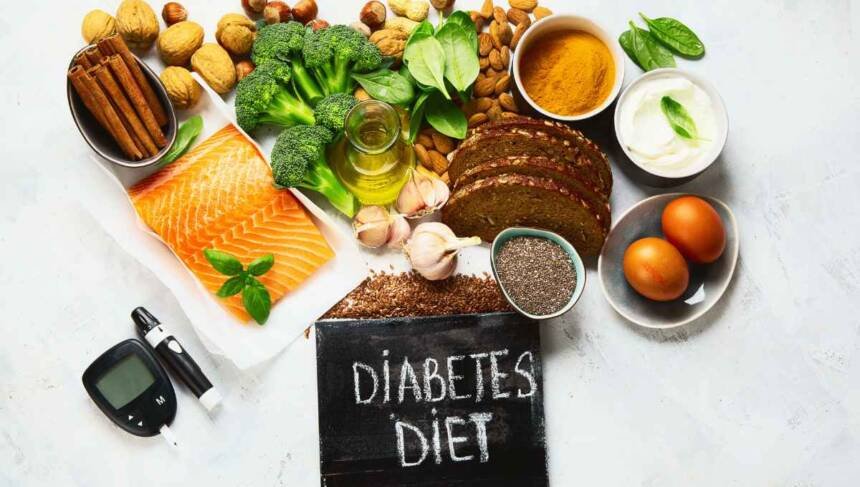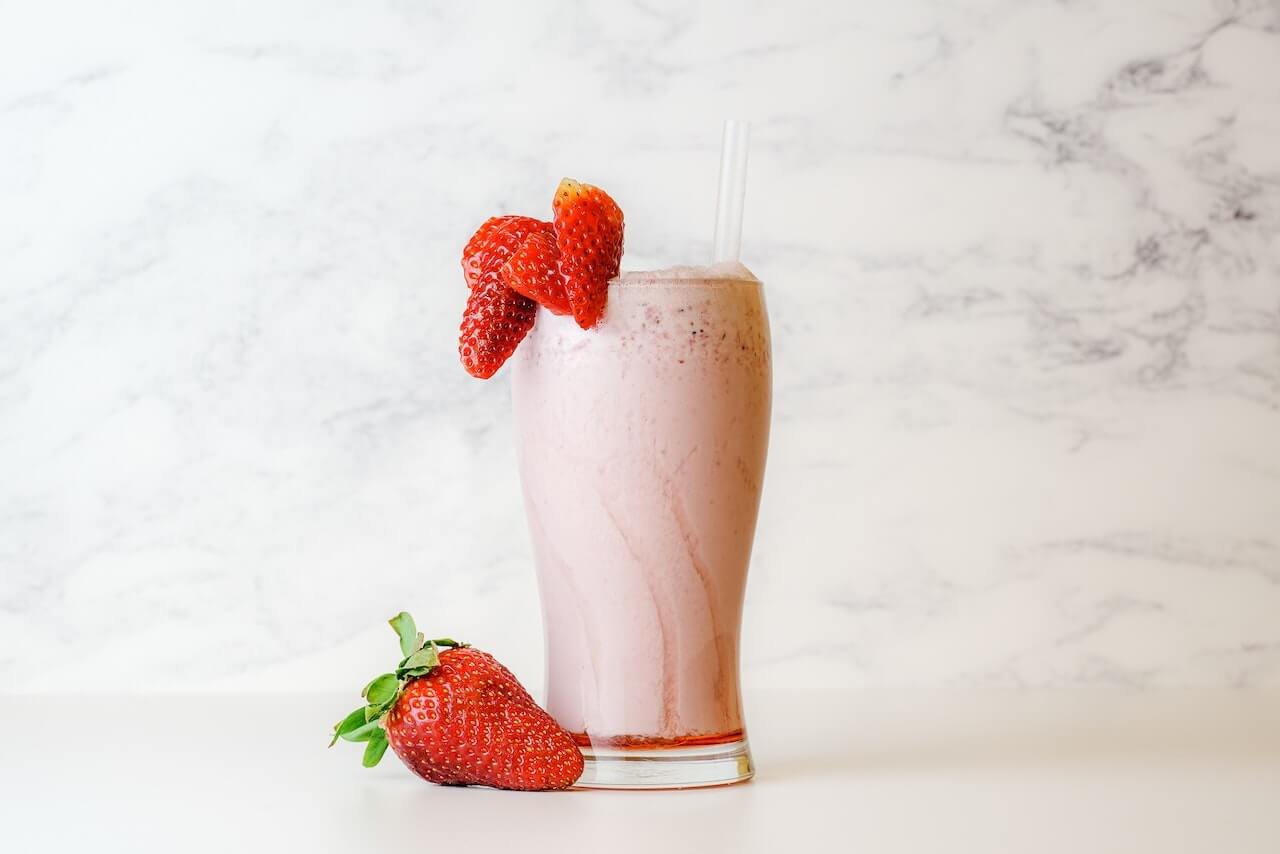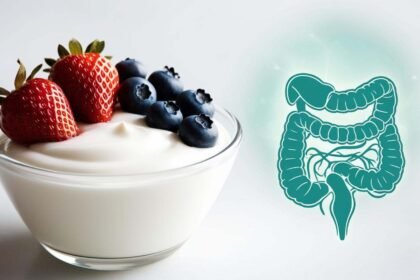If you or a loved one has diabetes, you know how important it is to carefully monitor your diet. Choosing the right foods can help keep your blood sugar levels stable and avoid dangerous spikes and crashes.
But with so much contradictory nutrition information out there, it can be tough to figure out what to eat.
Don’t worry, we’ve got you covered! We’ve done the research and consulted with leading experts to bring you the 10 best foods for managing diabetes. From high-fiber fruits to protein-packed lean meats, these tasty options will help you stay healthy while still enjoying your meals. Let’s dive in!
1. Leafy Green Vegetables
At the top of our list are nutrient-dense leafy greens like spinach, kale, and collard greens. These low-carb veggies are packed with vitamin C, vitamin K, fiber, and antioxidants while being very low in calories.
“Leafy greens are an excellent choice for people with diabetes,” says Erin Palinski-Wade, RD, CDE, and author of 2 Day Diabetes Diet. “They are low in carbohydrates and can help control blood sugar levels while providing important vitamins and minerals.”
Palinski-Wade recommends aiming for 2-3 servings per day. Try them sautéed with garlic and olive oil, blended into smoothies, or as the base of a hearty salad.
2. Fatty Fish
Fatty fish like salmon, mackerel, sardines and tuna are rich in omega-3 fatty acids, which have been shown to help reduce inflammation and lower heart disease risk in people with diabetes. The high protein content also helps you feel fuller for longer.
“Fish is a wonderful protein source for people with diabetes,” says Melissa Joy Dobbins, RDN, and nutrition advisor for Sound Body Life. “The healthy fats help improve insulin sensitivity and protect your heart.”
Dobbins recommends eating fish 2-3 times per week. Grill, bake, or pan-sear it with fresh herbs and a squeeze of lemon for maximum flavor.
3. Eggs
A breakfast favorite, eggs make an excellent diabetes-friendly food. One large egg packs 6 grams of protein along with important nutrients like vitamin D and choline. The high protein helps stabilize blood sugar levels and increase satiety.
“Eggs are my top pick for people with diabetes,” says Renee Clerkin RD, LDN, CLT. “They’re affordable, versatile, and packed with nutrition. Plus, they have a very low glycemic index, so they won’t spike your blood sugar.”
For a nutritious breakfast, Chung suggests scrambling 2 eggs with spinach and topped with avocado slices. You can also hard boil a batch for grab-and-go snacks.
4. Berries
When you’re craving something sweet, reach for a bowl of fiber-rich berries like blueberries, raspberries, strawberries, and blackberries. Berries are high in antioxidants and have a low glycemic index, so they won’t cause major blood sugar spikes.
“Berries are a diabetes-friendly fruit because they’re low in carbs but high in fiber and antioxidants,” explains Palinski-Wade. “This combination helps control blood sugar and reduces inflammation.”
She recommends a serving of 1 cup of fresh or frozen berries. Top Greek yogurt with mixed berries for a nutritious dessert or blend them into a smoothie.
5. Nuts and Seeds
Need a satisfying snack? Grab a handful of nuts or seeds like almonds, walnuts, pistachios, chia seeds, or pumpkin seeds. These crunchy bites provide fiber, healthy fats, antioxidants, and protein to keep you feeling full.
“Nuts and seeds can be an excellent snack for diabetics,” says Dobbins. “Their fiber and protein help stabilize blood sugar levels when paired with other nutritious foods.”
She recommends portioning out 1⁄4 cup servings to avoid overeating. Try sprinkling nuts or seeds over oatmeal or salads, or enjoy them with fresh fruit for a balanced snack.
6. Beans and Lentils
Loaded with fiber and protein, beans and lentils are an excellent addition to any diabetes-friendly diet. These budget-friendly superfoods have a low glycemic index and contain important minerals like iron, potassium, and magnesium.
“Beans are a true nutritional powerhouse for people with diabetes,” says Chung. “Their fiber and protein help control blood sugar levels while keeping you feeling full and satisfied.”
She suggests aiming for 1⁄2 cup per day by tossing them into salads, soups, chilies, or enjoying them as a fiber-rich dip with fresh veggies.
7. Extra Virgin Olive Oil
When it comes to healthy fats, extra virgin olive oil is a star choice for diabetes management. This flavorful oil is rich in antioxidants and monounsaturated fatty acids, which can help improve insulin sensitivity and reduce inflammation.
“Extra virgin olive oil is my go-to oil recommendation for people with diabetes,” says Palinski-Wade. “It has such great anti-inflammatory effects and can help protect heart health when used in place of other oils or fats.”
Use it to sauté veggies, dress salads, or drizzle over proteins and whole grains. Just be mindful of portions since all oils are high in calories.
8. Plain Greek Yogurt
Thick, creamy, and packed with protein, plain Greek yogurt is a diabetes diet star. Each serving provides around 20 grams of protein to help control blood sugar and keep you satisfied for hours.
“Greek yogurt is an excellent dairy choice for people with diabetes,” explains Dobbins. “It’s a great source of protein, calcium, and beneficial probiotics. Just be sure to choose plain, unsweetened varieties.”
Top Greek yogurt with fresh berries, nuts, or a drizzle of honey for sweetness. You can also use it to make dips, dressings, and even baked goods.
9. Avocados
With their creamy texture and mild flavor, avocados make a delicious diabetes-friendly ingredient. They’re low in carbs but high in heart-healthy monounsaturated fats, fiber, and powerful antioxidants.
“I love recommending avocados to my patients with diabetes,” says Chung. “Their healthy fats help increase satiety while providing excellent nutrition.”
Toss diced avocado into salads or omelets, spread mashed avocado on whole grain toast, or use it to make guacamole for dipping fresh veggies.
10. Cinnamon
While not a food itself, cinnamon is a fantastic diabetes-friendly spice to keep on hand. Numerous studies show that cinnamon can help lower blood sugar levels and improve insulin sensitivity in people with type 2 diabetes.
“I always suggest adding cinnamon to foods and beverages,” says Palinski-Wade. “It provides anti-inflammatory benefits and may help better control blood sugar when consumed daily.”
Sprinkle cinnamon over Greek yogurt, oatmeal, or coffee. You can also add it to savory dishes like curries and marinades.
The Takeaway
Managing diabetes doesn’t have to mean depriving yourself of delicious, satisfying foods. By focusing on high-fiber, nutrient-dense options like the ones above, you can keep your blood sugar stable while enjoying vibrant and flavorful meals.
“The key is to build a pattern of eating focused on foods that have a low glycemic impact,” says Dobbins. “Load up on vegetables, lean proteins, healthy fats, and fiber-rich foods while limiting processed, sugary items.”
So go ahead and fill your plate with leafy greens, fatty fish, berries, and all the other diabetes-friendly superstars. With a little planning and creativity in the kitchen, you can take control of your health while savoring every bite.












